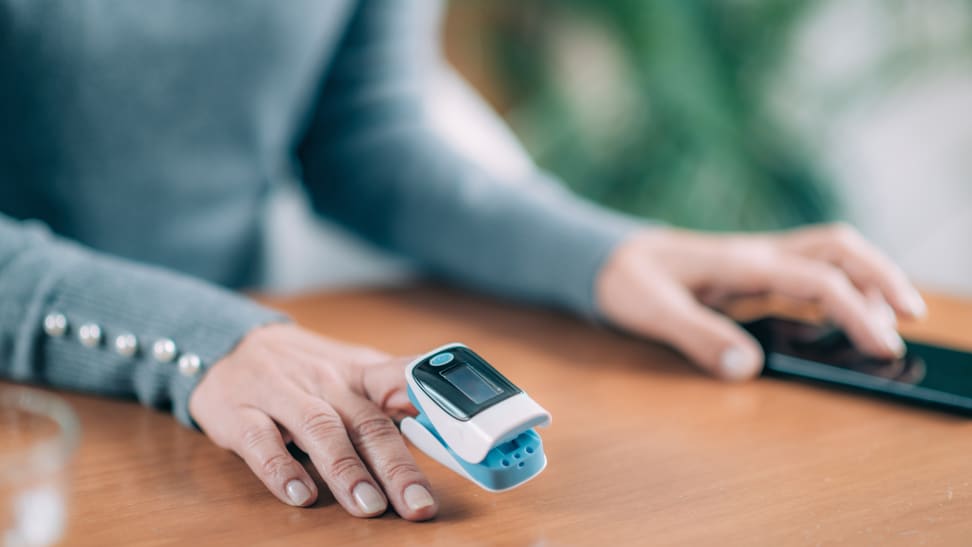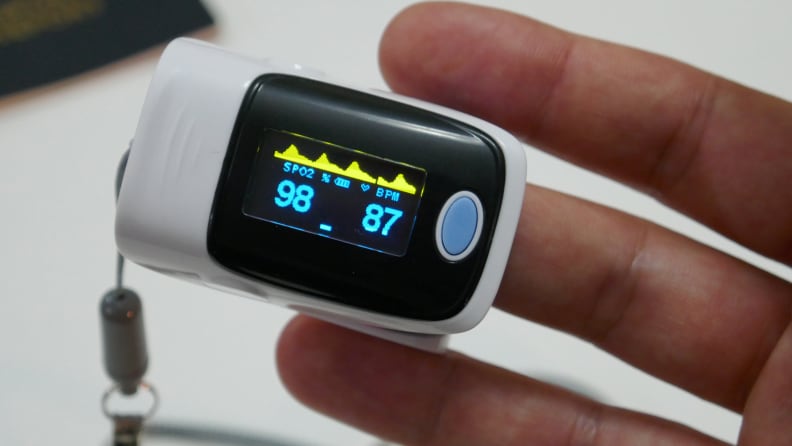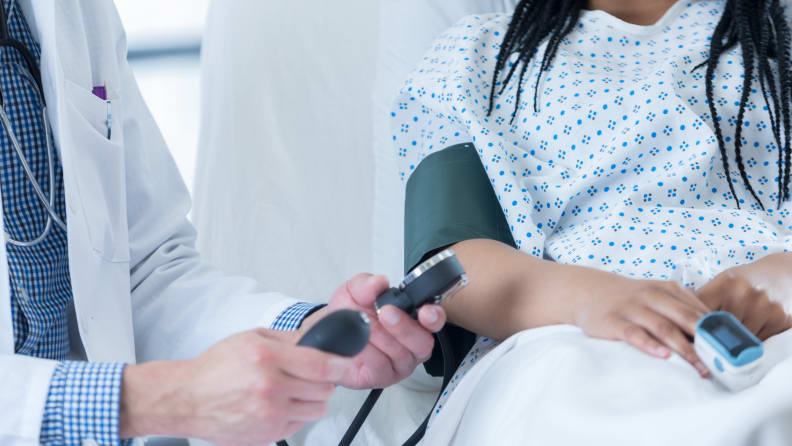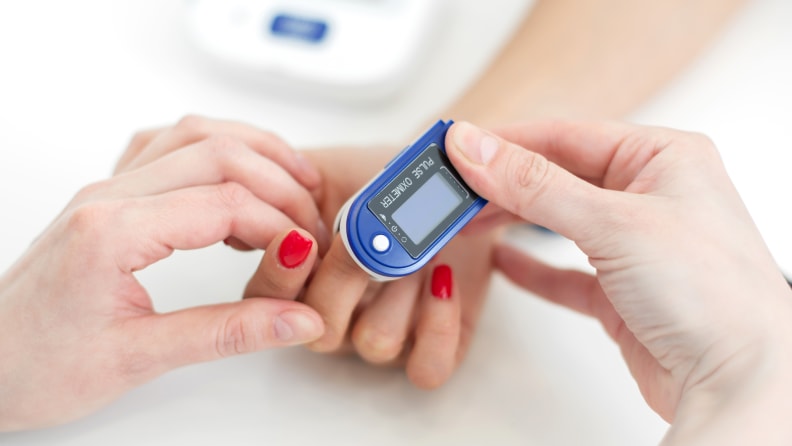 — Recommendations are independently chosen by Reviewed’s editors. Purchases you make through our links may earn us a commission.
— Recommendations are independently chosen by Reviewed’s editors. Purchases you make through our links may earn us a commission.Recently, you may have found yourself thinking of buying something that, a month or so ago, you may never have heard of before: a pulse oximeter. This medical device measures oxygen saturation in the blood, which some people think can be a gauge for reduced lung capacity—a telltale symptom of COVID-19.
Now, oximeters are selling out from the stores that usually carry them, such as CVS and Walgreens. Such scarcity can make it seem as though these devices are something that should be in every household, nestled in your medicine cabinet between your thermometer and the Band-Aids. But this may not be the case for everyone. Here’s the lowdown on pulse oximeters—what they are, what they do, and if you really need to get one for yourself or your loved ones.
What is a pulse oximeter?

Blood oxygen saturation should be at least 95 percent.
The type of pulse oximeter currently selling out is a device that is clipped over a finger, toe, or ear lobe to measure the saturation of oxygen in the blood. The device does this by emitting small beams of red light through the skin and, based on how the blood absorbs the light, can estimate the percentage of oxygen in the blood. “If it’s highly saturated, which is good, it’s usually 95 to 97 percent in most healthy individuals. If it’s low, in the 90 range, that’s not considered very good,” says Dr. Stan Rizzo, Chief Medical Officer of the American Lung Association.
According to the Mayo Clinic, oxygen saturation that dips below 90 percent is considered hypoxic, which means there is a lower level of oxygen than is needed in the blood. Depleted oxygen can lead to lightheadedness, fainting, coughing, wheezing, and even death.
Why are pulse oximeters selling out now?
COVID-19 is a respiratory illness that can cause lung complications including pneumonia and acute respiratory distress, both of which deplete oxygen levels in the body, according to Johns Hopkins Medicine. Some COVID patients either do not notice or do not have other illness symptoms as their oxygen levels drop, according to Dr. Richard Levitan, who wrote in an op-ed in the New York Times that using pulse oximeters and monitoring blood oxygen saturation can help individuals recognize signs of COVID-19 before they notice any other symptoms. Most at-home pulse oximeters range in price between $30 and $200, so increased demand for pulse oximeters may be driven by people who want a relatively inexpensive device that gives out a number for assessing their health, rather than trying to gauge symptoms based on how they feel.
Who needs a pulse oximeter?

Pulse oximeters are often used to gauge symptoms of respiratory illnesses.
You may have had a medical professional use a pulse oximeter on you at a doctor’s office or hospital as part of a routine checkup, for a pre- or post-op procedure, or as a diagnostic test for a respiratory illness. Some people purchase these devices for home use to help manage certain medical conditions, including sleep apnea, high blood pressure, or respiratory ailments that require supplemental oxygen.
Whether otherwise healthy people need an oximeter depends on a few things. “The main message I try to get across is that the pulse oximeter is just one factor that needs to be looked at when you’re communicating with your doctor,” Dr. Rizzo says. He suggests it’s more important to pay attention to how you feel in general if you suspect you may have been exposed to or contracted the novel coronavirus.
“We don’t know for sure, but I think as far as an oxygen level drop being the first sign of COVID-19, it doesn’t seem to be the most likely scenario,” he says. Therefore, it’s important to know the confirmed symptoms of the disease, which include fever, coughing, shortness of breath, muscle pain, headaches, and loss of smell or taste, according to the CDC.
Still, as an extra measure of precaution, and especially for people who are at higher risk of respiratory issues, there's no harm in getting an oximeter (if you can find one). Rizzo says you don’t need to buy an expensive one because, as long as it’s a physical device, the technology should be the same in all of them.
Can you use smartphone oximeters?
One thing Rizzo says to avoid, however (unless your doctor tells you otherwise), are phone apps that claim to work as pulse oximeters. “The traditional pulse ox works by shooting two wavelengths of light into the tissue. It’s not just white light, which is what most of the phone apps would use,” he says. This means the technology of a phone oximeter app is fundamentally different than an actual device, so if you’re relying on an oximeter for clear, consistent data, it’s best to stay old-school until more testing is done on phone oximeter apps. (Physical pulse oximeters that link to a phone app to track readings are medically fine, though may cost you more for that feature.)
If you do get an oximeter, Rizzo recommends speaking with your physician about it so you have context for what the numbers it displays mean for you. “The more information you have about what to do about the number on the pulse oximeter, the better you’ll be able to handle it,” he says. “It’s one number to be used along with everything else when you either call or do a televisit with your healthcare provider and say, ‘This is how I’m feeling,’ [and also mention the number on your pulse oximeter],’” he says. “It’s just additional information. It’s a matter of access and affordability.”
What are the downsides of using an oximeter?

Pulse oximeters are helpful, but some small things can impact the accuracy of their readings.
Oximeters can be a valuable tool for gauging your health. But like any other gadget, they can be inaccurate—Rizzo says even sometime as mundane as nail polish on fingers and toes can impact the readings—so it’s important not to overuse them to the extent that you ignore potential inaccuracies or allow the numbers to supersede other things going on with your body. “If you start fixating on a number that is not totally accurate, but you don’t know it’s not accurate, then it might give you a false sense of security or a false sense of alarm,” says Rizzo. “If you have a cold finger or cold ear and the blood flow is not as good as it should be, the reading may not be as good. Or if the device is not fitting securely over the finger or the toe and it’s moving a bit, that could make a variation.”
To ensure you’re getting correct numbers, he advises taking your own pulse with your fingers on your wrist or neck, and seeing if it’s close to what’s shown on the oximeter, which should display your pulse and blood saturation. If the pulse is good, the saturation level you see is more likely to be correct.
Ultimately, like many other medical devices, pulse oximeters are one thing you can use to have a greater understanding of your overall health, not something that can give you a full picture or a diagnosis. If you’re not sure if it’s right for you, talk to your doctor before you get one.
Where to get oximeters
The best pulse oximeter for you is one recommended to you by your doctor. Otherwise, call your local CVS, Walgreens, or another drugstore to see if they have any in stock. Like the drugstores, the FSA store frequently sells out of pulse oximeters, but when they are in stock, you can use your pre-tax money to buy one there. No matter where you buy one, remember: your oximeter doesn't have to be expensive to work well, but it should come from a reputable retailer.
Shop oximeters at Walmart starting at $25
Shop oximeters at CVS starting at $34.99
Shop oximeters at Walgreens starting at $29.99
Shop oximeters at the FSA store starting at $34.99
The product experts at Reviewed have all your shopping needs covered. Follow Reviewed on Facebook, Twitter, and Instagram for the latest deals, product reviews, and more.
Prices were accurate at the time this article was published but may change over time.
